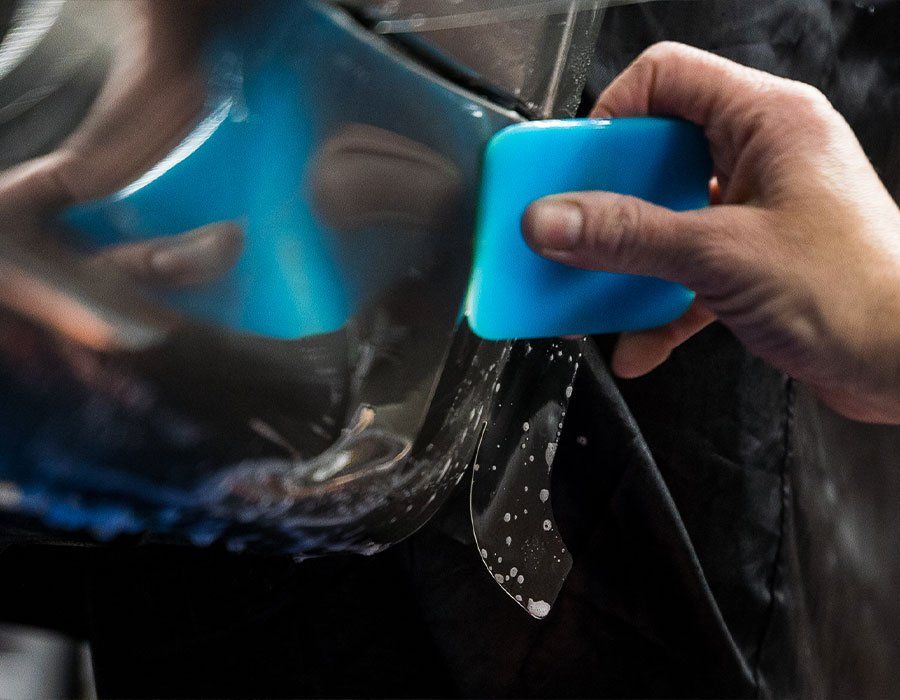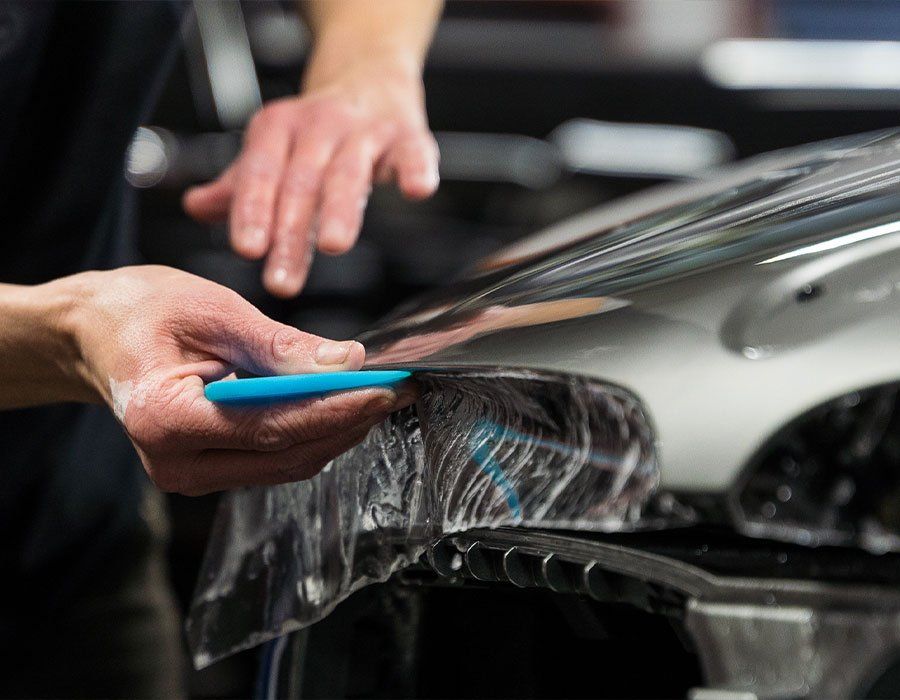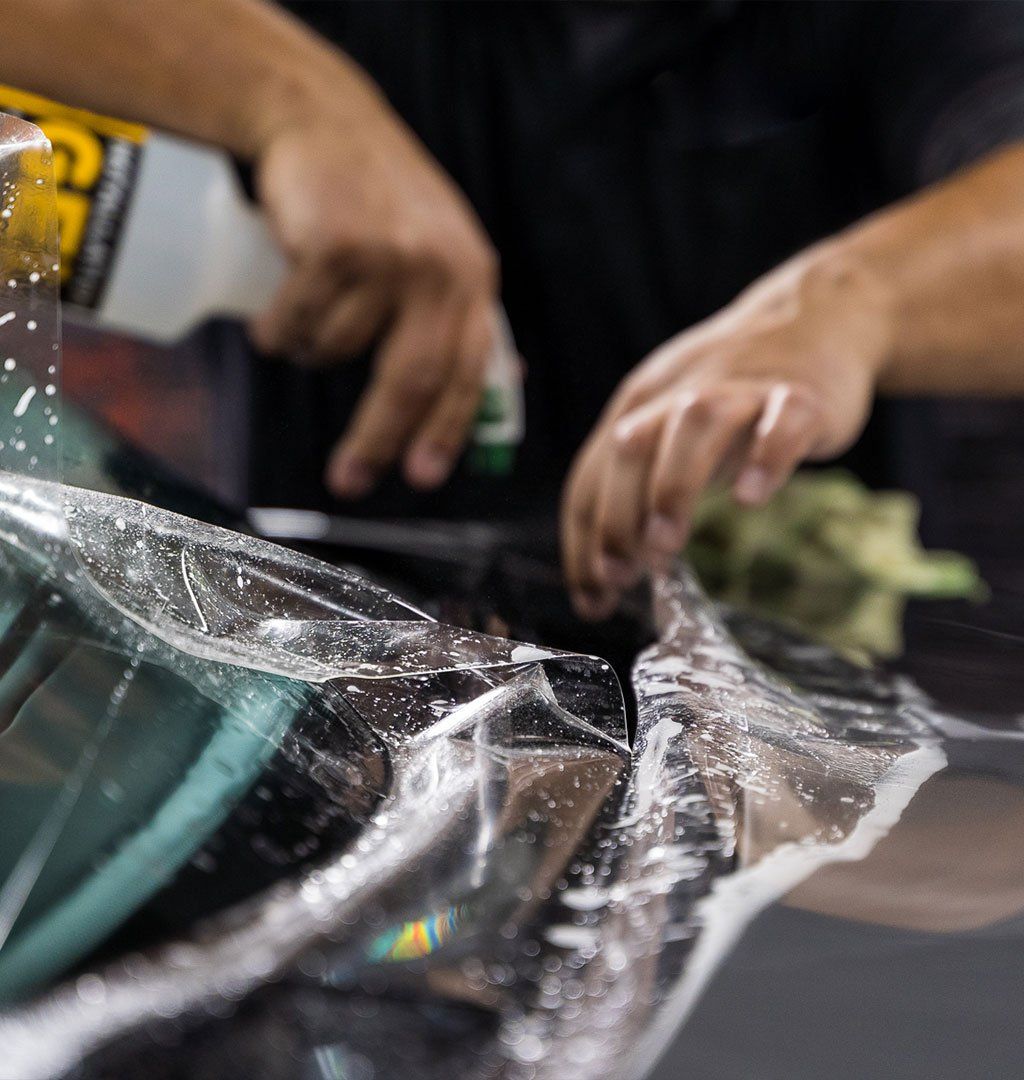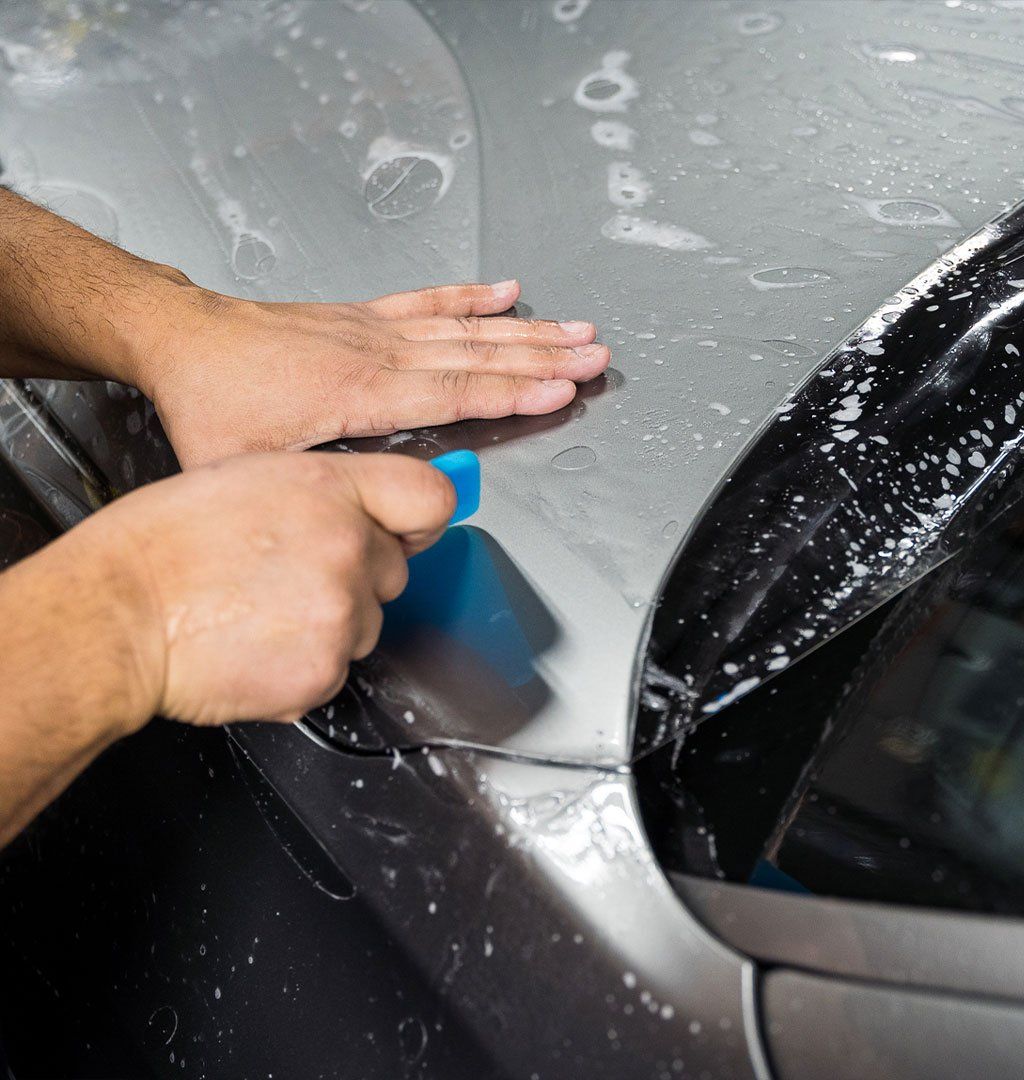Why PPF is the Game-Changer for Protecting Cars with Delicate Paint
CALL (708) 574-8496
GET A FREE ESTIMATEWhen it comes to cars, protecting that beautiful paint job should be at the top of every owner's list. Imagine sliding behind the wheel of your dream car, only to see scratches or chips ruining its flawless look. That's where Paint Protection Film (PPF) comes in. This incredible invention acts like a superhero cape for your vehicle, shielding it from everyday dangers such as road debris, dust, and harsh weather. But how does it really work, and why is it such a big deal for those who want their cars to shine like the day they drove them off the lot? Let’s dive into the amazing world of PPF and discover why it's become essential for owners of high-end vehicles.
Paint Protection Film (PPF) is a game-changer for cars with delicate paint because it provides a robust, transparent barrier against scratches, chips, and other environmental hazards. Its self-healing properties allow minor scratches to disappear with heat, preserving the vehicle's aesthetics while maintaining its resale value, making it an essential investment for owners of high-end or meticulously maintained cars.
Why Delicate Paint Needs Extra Protection
High-end vehicles often embody luxury through their intricate and delicate paint jobs, which can be breathtakingly beautiful but come at a cost: they are particularly susceptible to damage. Think about it—every day, these cars face threats that could quickly diminish their immaculate appearance. Road debris, UV rays, harsh weather conditions, and even minor brushes against other vehicles can wreak havoc on delicate finishes. For example, just a small pebble kicked up from the road can leave a lasting mark on a high-gloss surface, damage that may not only mar the aesthetic but also devalue the vehicle.
One of the big offenders is UV radiation, which can cause fading in even the most stunning colors. As time goes by, the radiance of vibrant hues diminishes, leaving behind a lackluster look that no owner desires. Imagine owning a bespoke, hand-painted Rolls-Royce: every inch of that car's exterior is not just paint; it's an artistic expression of craftsmanship. However, without proper protection, that exquisite finish can fall victim to elements as benign as sunlight or as relentless as rain.
According to industry experts, the costs associated with repainting such high-end vehicles can easily exceed $10,000 due to specialized techniques and products needed to restore their original glory. Regular exposure to road debris isn’t just an inconvenience; it's a ticking time bomb that could necessitate costly touch-ups all too frequently. The mathematics of maintenance quickly becomes clear—neglecting protective measures now can lead to extensive repairs later. Car owners need to grapple with this reality because investing in advanced protective solutions today could save thousands in the long run.
Moreover, the damage goes beyond physical appearance; resale value can plummet with evident wear and tear. Potential buyers often gauge a vehicle's worth based on its exterior condition. A striking first impression bolstered by immaculate paintwork can add about 15% to the perceived value of your automobile during resale. With this understanding of the significant challenges faced by delicate paint finishes, it becomes essential to explore innovative protective solutions tailored for luxury vehicles.
Understanding Paint Protection Film
Paint Protection Film (PPF) is more than just a layer of clear material—it’s a formidable shield against the myriad hazards that threaten your vehicle's pristine finish. Imagine driving on a road where gravel and debris scatter like confetti—each one a potential threat to your beloved car’s exterior. That's where PPF steps in, acting as an invisible barrier designed to absorb impacts from these tiny missiles that could otherwise cause unsightly chips and scratches.
The film itself is made from thermoplastic urethane, which gives it remarkable properties. Not only is it flexible and stretchable, making for a snug fit over any surface, but it's also self-healing. This means that minor abrasions don’t necessitate replacing the film; instead, they can disappear under the warmth of sunlight or with a bit of heat from a hairdryer. Picture this: you accidentally brush against a bush while parking, and instead of cringing at the thought of scratches, you simply watch as they fade away, thanks to PPF.
Initially developed for military applications, PPF has proven its worth in the consumer automotive world by keeping cars looking sharp through various environmental challenges. Another appealing feature is that PPF typically comes in thicknesses ranging from 6 to 10 mils, providing options tailored to different preferences and needs. While everyday commuters may find a 6-mil film sufficient, off-road enthusiasts often choose thicker variants for added protection against harsher conditions.
Preservation and Aesthetic Appeal
Beyond just its protective qualities, PPF maintains the aesthetic integrity of your vehicle. It keeps the painted surfaces as vibrant as the day you drove it off the lot, preserving that factory-like shine for years to come. A dirty car or dull paint can make your pride and joy feel lackluster, but with PPF, even mud and grime can be simply washed away without damaging the underlying finish. While PPF offers exceptional benefits in safeguarding your vehicle, consideration of installation methods becomes essential for ensuring optimal performance.
Professional Installation Matters
Installing Paint Protection Film is not just a DIY task; it requires skill and precision to ensure the best outcome. An inexperienced installer may inadvertently cause more harm than good, leading to bubbles or misaligned film edges. Opting for professionals guarantees that the film adheres correctly and performs optimally over time.
Major Benefits of PPF
One of the standout advantages of Paint Protection Film is its self-healing properties. This innovative technology allows minor scratches and swirl marks to vanish with just the application of heat, whether from the sun or a heat gun. Imagine driving your car daily, encountering gravel, branches, and rogue shopping carts—no need to fret; minor imperfections can correct themselves simply by parking in the sun!
It's particularly beneficial for delicate paint jobs, providing a layer of assurance that helps to maintain the flawless appearance you desire without constant polishing. In fact, statistics reveal that vehicles equipped with self-healing PPF experience up to 20% fewer visible scratches over a five-year period compared to those treated with traditional waxes or sealants.
But beyond scratch resistance, PPF also shines in its remarkable transparency and visual appeal. Unlike older protective solutions, such as hefty plastic covers or films that can alter your car's aesthetic, modern PPF is optically clear. This means you have comprehensive protection without sacrificing beauty. The film enhances the gloss and depth of your vehicle's paint while maintaining its original colors. A car wrapped in PPF truly looks showroom-new for longer, giving you more than just peace of mind; it gives you pride of ownership every time you glance at your vehicle.
You won't be able to tell there's anything there protecting your paint. Additionally, it’s essential to understand how PPF plays a crucial role in preserving your vehicle's value. Well-maintained exteriors are synonymous with higher resale values. Prospective buyers often seek vehicles that appear immaculately preserved, recognizing that a car's exterior is a reflection of its overall care. The presence of well-applied PPF can be a powerful selling point. It retains your car's factory finish while protecting it from elements like road salt, bird droppings, and UV rays.
As a result, potential buyers are not just willing but eager to pay a premium for cars that show evidence of effective maintenance—meaning your initial investment in PPF continues to pay dividends even upon resale. With these transformative benefits highlighted, we turn now to look at the fascinating mechanics behind this protective technology.
How PPF Technology Works
The science behind PPF is intricate yet straightforward, and understanding it can unveil how a thin film can provide substantial protection against the wear and tear of daily driving. At its core, PPF consists of multiple layers, each engineered for a specific function that works harmoniously to protect the vehicle's exterior.
Multiple Layers
The structure of PPF is central to its effectiveness as a protective barrier. The top layer is crafted from elastomeric polymers, which possess remarkable properties enabling them to return to their original shape after being disturbed. This means when your vehicle encounters gravel or debris, the film flexes instead of cracking or tearing. Underneath this initial layer lies the adhesive layer, specifically designed to form a robust bond with your vehicle's paint, ensuring that it stays securely in place even when faced with environmental stressors.
Moreover, an additional bottom liner serves a crucial purpose by protecting the adhesive until you’re ready to apply the film. Once these layers are combined, they create a resilient and flexible barrier, capable of absorbing impact while maintaining clarity and aesthetic appeal.
UV Resistance
Another critical quality of PPF is its built-in UV resistance. This feature plays an essential role in preventing harmful ultraviolet rays from causing degradation and fading of your car’s paint over time. For those living in regions where sunlight is particularly intense—such as coastal towns or desert landscapes—the importance of UV protection cannot be overstated.
In fact, studies have shown that prolonged exposure to UV rays can lead not only to fading but also to a process called oxidation, which deteriorates the paint's integrity. With PPF acting as a shield against these rays, car owners can rest assured that their vehicles will retain their showroom shine for years to come. This combination of innovative protection and practical benefits underscores why advanced solutions like this are essential for any car owner looking to maintain their vehicle’s beauty and longevity. As we move forward, let’s explore how to care for your freshly protected vehicle effectively.
Maintaining Your PPF-Coated Vehicle
Proper upkeep of your Paint Protection Film (PPF) not only ensures its effectiveness but also preserves the stunning appearance of your vehicle. Think of it as a guardian that shields your car's paint from scratches, chips, and environmental stressors. By committing to a regular maintenance routine, you extend the lifespan of both the film and the paint beneath it, ensuring that your investment retains its value.
- Regular Cleaning: It's essential to wash your car frequently—every one to two weeks—using a gentle pH-neutral car shampoo. This type of soap is specially formulated not to irritate or degrade the film's adhesive, keeping it in pristine condition. Be mindful of gravel and dirt; they can scratch the surface if not removed properly. A soft sponge or microfiber mitt will help gently lift dirt without causing harm. To dry your vehicle after washing, opt for a microfiber cloth. Traditional towels can inadvertently cause tiny scratches that diminish your car's glossy finish. If you live in areas with extreme weather conditions, such as California or Texas, or often drive through environmental hazards, consider increasing your washing frequency. It’s amazing how much grime can accumulate in just a few days!
- Inspecting for Damage: Regular inspections are just as important as cleaning. Set aside time every month to closely examine your PPF for signs of damage such as peeling edges, bubbles, or discoloration. Minor issues can often be fixed at home; for instance, applying a heat gun on low settings can help re-adhere any lifted edges. If you notice a bubble forming under the film, gently use a needle to release the air and press the film back down with a cloth—applying heat can help it adhere more firmly. However, if you encounter significant damage or peeling beyond your expertise, it's time to call in professionals who specialize in PPF repair.
Maintaining your PPF isn't mere ritualistic washing; it’s an ongoing commitment that pays dividends by keeping your vehicle looking newer for longer while enhancing its overall functionality. With proper care and regular attention, you can ensure that every drive remains as pristine as the day you took it off the lot.
In conclusion, investing time and effort into maintaining your PPF is vital for maximizing protection and preserving the aesthetic appeal of your vehicle. Prioritize these maintenance practices to enjoy a long-lasting relationship with your car's stunning finish.
Trusted PPF Solutions in Carol Stream, IL
When it comes to safeguarding your vehicle's paint, D’Andrea Auto Detailing stands out as the go-to provider for exceptional paint protection film services in Carol Stream, IL. Our expertly applied PPF acts as a shield against road debris and environmental damage, preserving your car’s pristine appearance. Trust our skilled team to deliver seamless installations that enhance the longevity and aesthetics of your vehicle. Reach out today and experience the difference of professional-grade paint protection that works as hard as you do.





